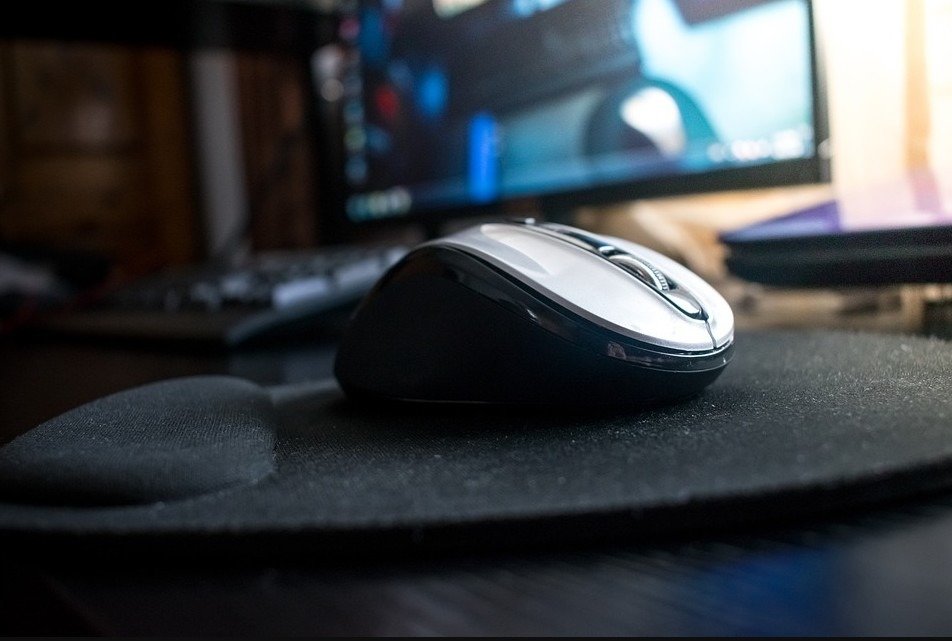A bad day at work causes a lot of stress for some people. Additionally, stressful workstations also decrease our productivity. To avoid this, offices adopt ergonomics. Ergonomics is the process of designing and arranging workplaces to fit the people who frequently use them. It aims to create safe, comfortable, and productive workplaces through studying human abilities and limitations and then work on them.
Among other ergonomic tools, it is essential to invest in something that lessens the physical fatigue we do to our bodies. With this, ergonomic chairs, ergonomic desks, and other productivity-boosters started to populate the traditional offices. Today, we are looking into one of the most often overlooked ergonomic tools. What else aside from the ergonomic mousepads!
Mouse pads
A mousepad is a soft, thin-like surface used for placing and moving a computer mouse. It enhances the usability and performance of a mouse, instead of using it directly on a table. Mousepads provide a surface to allow a mouse to measure movement accurately and without jitter. Other mousepads were incorporated with padded wrist rest to increase ergonomics.
When looking for great mousepads, we should check the following three essential benefits: speed, precision, and comfort. Aside from those, a mousepad preserves a desk or a table from being scratched by continuous mouse motion.
Modern mousepads are generally made of lesser density rubber composites covered with fabrics in the upper surface. However, other types have also been used, such as plastic, leather, cork, aluminum, and wood. High-quality mousepads are usually made from glass, aluminum, and high-tech fibers.
Ergonomic Mouse Pads
Ergonomic mouse pads are an affordable solution to wrist fatigue and hand discomfort during excessive computer use. Ergonomic pads provide soft, padded wrist support that reduces the strain caused by resting your hand on a hard-un-angled desk.
Ergonomic mouse pads usually come with a cushion where you can rest your wrist while gripping a mouse. Aside from reducing friction between the desk and your hand, it also keeps your wrist elevated, reducing the angle you need to bend when holding your mouse. Your hand is inclined into a more natural position with proper elevation, thereby allowing you to work more hours with reduced discomfort.
If your office job often requires you to spend hours on a computer, consider buying an ergonomic mouse pad. Your hands will thank you for it.
Top Three Benefits of Ergonomic Mouse pads
- Ergonomic mouse pads are filled with soft-gel or cotton cushion that elevates your wrist into a comfortable position, thus preventing excessive straining.
- Ergonomic mouse pads have an anti-skid bottom that allows extra stability and smooth mouse control with little to less displacement.
- The upper portion of most ergonomic mouse pads is often made with a soft microfiber surface that improves mouse accuracy and overall performance.
Avoiding Carpal Tunnel Syndrome
Carpal tunnel syndrome is a common problem for office workers who spend most of their time sitting at a computer and typing on a keyboard. It is caused by pressure on a nerve in the wrists. The condition’s symptoms include numbness, tingling, and pain in the wrists, hands, and fingers and making typing and all tasks that require your hand difficult.
Sure, there is a lot of possible cure, but it would probably take months to treat it thoroughly. The better alternative is, of course, prevention. Try arranging your activity and workplace that adheres to principles of office ergonomics.
Potential Hazards of Carpal Tunnel Syndrome
Without a wrist rest, your hand is required to bend in an angle to hover your mouse correctly. The more angle you are required to bend, the more contact stress and irritation will affect your tendons and tendon sheaths. This is especially true for workers who do high repetition or prolonged keying tasks.
Possible Solutions to Carpal Tunnel Syndrome
- Make sure that your hands can move freely and are fully elevated above the wrist rest while typing. When resting, the heel or the palm of your hand should be the one touching the mousepad, not your wrist.
- Match the ergonomic mousepad to the width, height, and slope of the front edge of your keyboard. The goal is to keep your wrist as straight as possible, without discrepancies between your keyboard and mouse.
- Find a mousepad that is relatively soft and rounded. It should be at least 1.5 inches (3.8 cm) deep.

